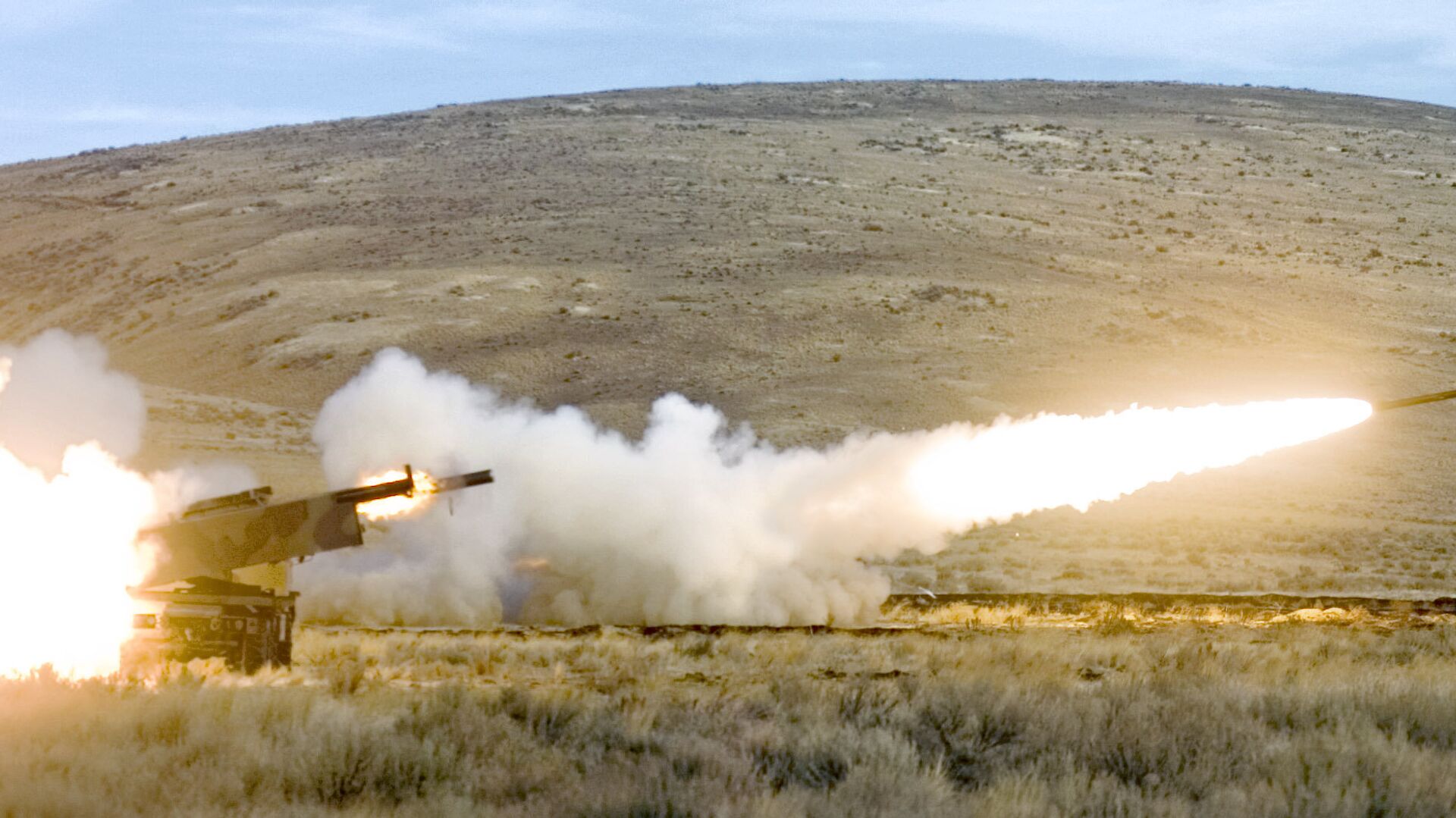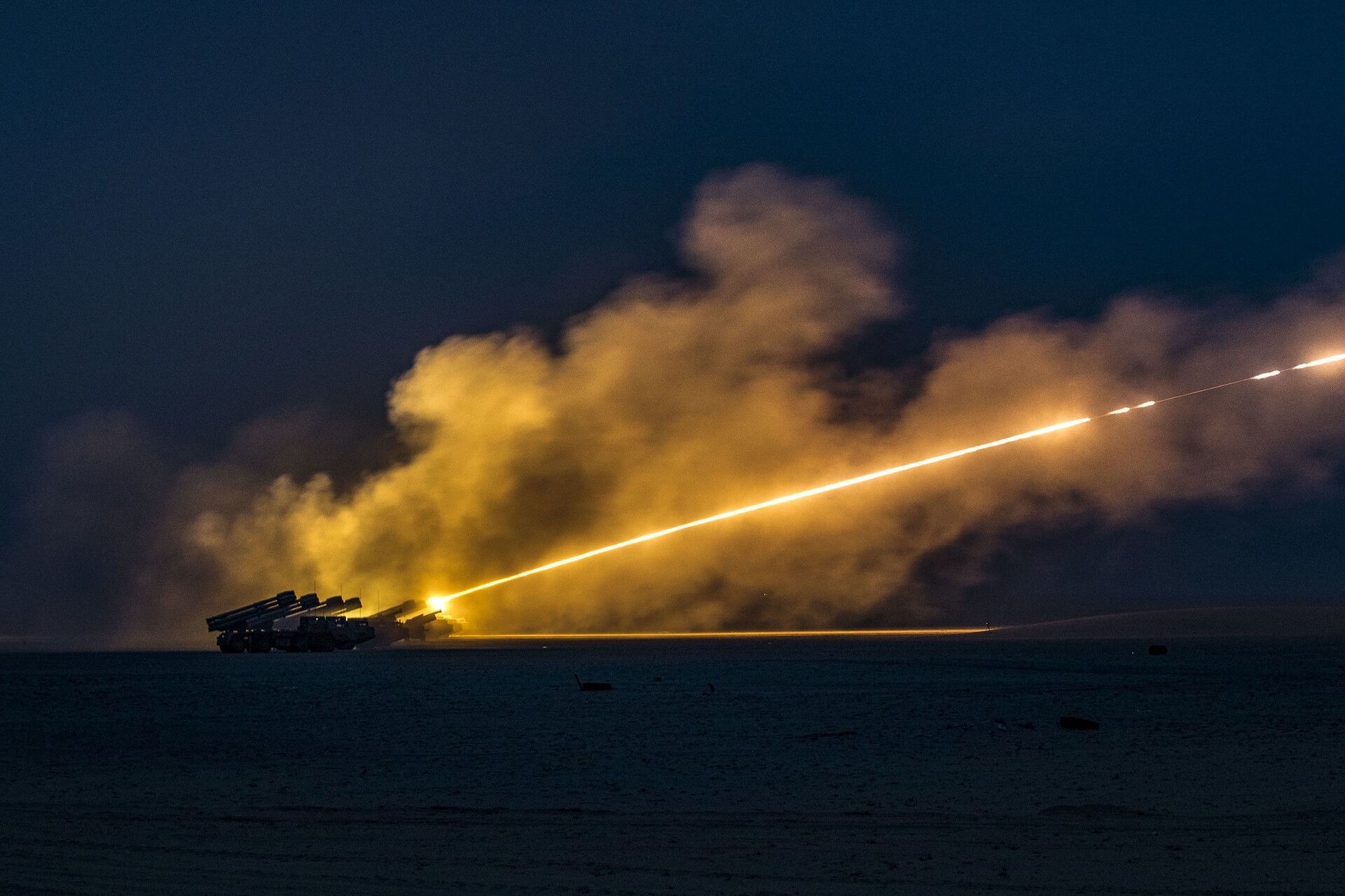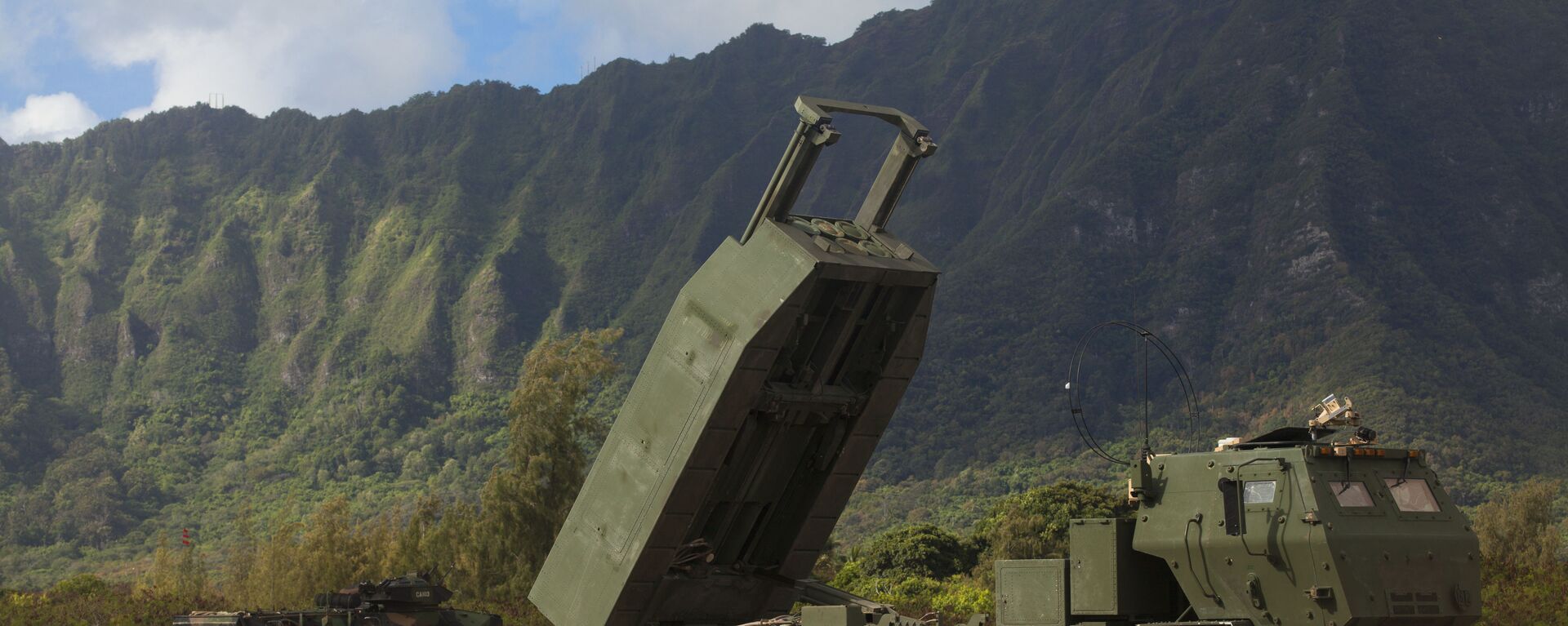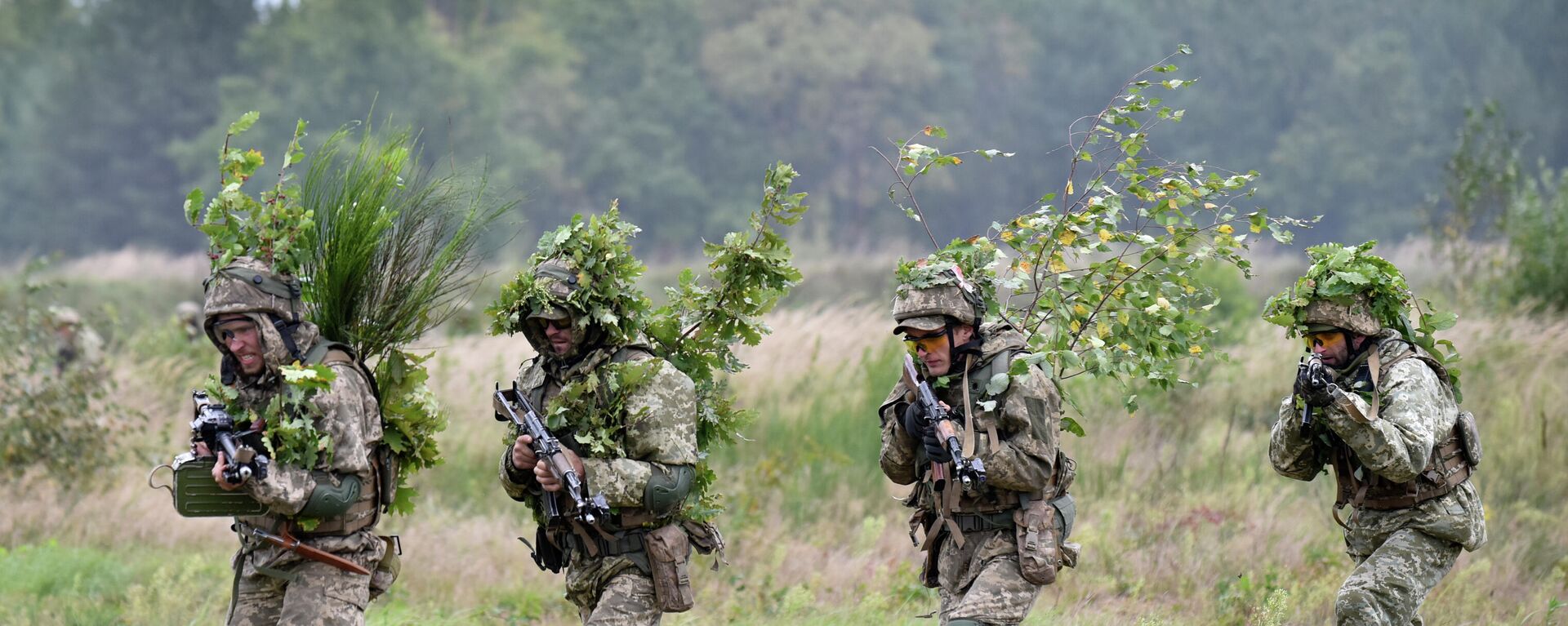https://sputnikglobe.com/20220603/himars-why-bidens-rocket-system-delivery-will-not-help-ukraine-prevail-in-conflict-with-russia-1095965246.html
HIMARS: Why Biden's Rocket System Delivery Will Not Help Ukraine Prevail in Conflict With Russia
HIMARS: Why Biden's Rocket System Delivery Will Not Help Ukraine Prevail in Conflict With Russia
Sputnik International
President Joe Biden has announced that the US will send M142 High Mobility Artillery Rocket Systems (HIMARS) to Ukraine. Secretary of State Antony Blinken says... 03.06.2022, Sputnik International
2022-06-03T13:17+0000
2022-06-03T13:17+0000
2022-08-08T12:07+0000
us
world
russia
europe
high mobility artillery rocket system (himars)
joe biden
weapons
nato
security agreement
inflation
https://cdn1.img.sputnikglobe.com/img/105662/13/1056621337_195:0:2062:1050_1920x0_80_0_0_412648a90229001c5eab3c8aeccf844f.jpg
"I see [Antony Blinken's assurance that Kiev won't use US rocket systems against Russia] as a statement designed to publicly avoid US responsibility for what could certainly happen and probably will happen", says retired US Air Force Lt. Col. Karen Kwiatkowski, a former analyst for the US Department of Defence. "It is not clear how effective or orderly Ukrainian political/military command and control is today, and the Russian operation successfully targeted this early on and seriously degraded this aspect. If Ukrainian political desperation grows any and all weaponry could be used against both Russia directly, or as part of a false flag or other incident intended to activate greater assistance or involvement from NATO countries or the US", she continued.According to Kwiatkowski, Ukraine's political leadership "is not particularly trustworthy": "It is also not clear who is running the Ukrainian defensive operations, and if they are completely connected with the Zelensky government", she remarks. The former DoD analyst suggests that most of the US weaponry will be delivered to Ukraine later in the year: Biden and US lawmakers "seek to reward this domestic sector well in this midterm election year", as there could be a shift in early 2023, depending on a new composition of the Congress.Joe Biden on Tuesday authorised the delivery of M142 HIMARS to Ukraine. The highly mobile rocket systems are equipped with munitions with a striking range of about 50 miles. Previously, the Biden administration rejected Kiev's request to provide them with longer range systems which could potentially be used to hit targets on Russian territory.However, even shorter range HIMARS could invite a disaster, according to Dan Kovalik, adjunct professor of law at the University of Pittsburgh and author of the book "No More War: How the West Violates International Law by Using 'Humanitarian' Intervention to Advance Economic and Strategic Interests".At the same time, the supply of the rocket artillery to Ukraine raises the risk of NATO states being involved in the ongoing standoff, as Russian Foreign Minister Sergei Lavrov remarked during his latest visit to Saudi Arabia."To the extent countries, whether the United States or any other country, are willing to provide aid to Ukraine there is at least some chance they could be dragged into the conflict", warns Timothy Hagle, a political science professor at the University of Iowa. "Once aid is given it might be difficult to say 'this much and no more'".In his 31 May op-ed for The New York Times, the US president emphasised that Washington does not seek a war between NATO and Russia. Nevertheless, he pointed out that the US "will continue providing Ukraine with advanced weaponry, including Javelin anti-tank missiles, Stinger anti aircraft missiles, powerful artillery and precision rocket systems, radars, unmanned aerial vehicles, Mi-17 helicopters and ammunition". He highlighted that the US will also reinforce NATO’s eastern flank with US forces and is looking forward to admitting Sweden and Finland to the transatlantic alliance.US Arms Deliveries to Ukraine Contradict American National InterestsFlooding Ukraine with weapons runs contrary to US interests, according to David T. Pyne, an EMP Task Force scholar and former US Department of Defence officer.He warns that the more weapons the US and NATO send to Ukraine and "the longer the Biden administration causes this unfortunate and unnecessary war to drag on, the greater the chances that the conflict will spread to one or more NATO countries likely leading to the outbreak of a full-scale and total war between the US and its NATO allies and Russia and its allies".The US has no security commitments to Ukraine whatsoever, stresses the former Pentagon officer. He notes that many US leaders "mistakenly believe we have security obligations under the Budapest Memorandum to provide arms to Ukraine". However, in reality the memorandum requires the introduction of a UN resolution condemning an intervention and holding consultations between the signatories to decide how to respond, Pyne explains.To complicate matters further, the Biden administration’s decision to give Ukraine one third of the US' Javelin ATGMs and one quarter of the country's Stinger anti-aircraft missiles with congressional authorisation to provide up to $11 billion in existing US military weapon systems to Ukraine "is serving to greatly weaken the US military and make [the US] less prepared to fight and win a future war", warns the ex-DoD officer.Given all of the above, "the best possible outcome for the US would be for Russia and Ukraine to sign a lasting peace agreement", according to him. This, in its turn, would open the door to normalising Russo-American diplomatic and trade relations and signing a mutual security agreement between Moscow and Washington to ensure the security and stability of both the US and Europe, including the Russian Federation.
https://sputnikglobe.com/20220601/is-bidens-refusal-to-send-long-range-rocket-systems-to-kiev-a-harbinger-of-us-policy-change-1095915855.html
https://sputnikglobe.com/20220316/ex-dod-officer-neutral-ukraine-would-be-better-for-us-than-protracted-conflict-1093935167.html
Sputnik International
feedback@sputniknews.com
+74956456601
MIA „Rossiya Segodnya“
2022
News
en_EN
Sputnik International
feedback@sputniknews.com
+74956456601
MIA „Rossiya Segodnya“
Sputnik International
feedback@sputniknews.com
+74956456601
MIA „Rossiya Segodnya“
us, europe, high mobility artillery rocket system (himars), joe biden, weapons, nato, security agreement, inflation, sputnik explains
us, europe, high mobility artillery rocket system (himars), joe biden, weapons, nato, security agreement, inflation, sputnik explains
HIMARS: Why Biden's Rocket System Delivery Will Not Help Ukraine Prevail in Conflict With Russia
13:17 GMT 03.06.2022 (Updated: 12:07 GMT 08.08.2022) President Joe Biden has announced that the US will send M142 High Mobility Artillery Rocket Systems (HIMARS) to Ukraine. Secretary of State Antony Blinken says Kiev has assured Washington that it will not use the systems to hit targets on Russian territory.
"I see [Antony Blinken's assurance that Kiev won't use US rocket systems against Russia] as a statement designed to publicly avoid US responsibility for what could certainly happen and probably will happen", says retired US Air Force Lt. Col. Karen Kwiatkowski, a former analyst for the US Department of Defence.
"It is not clear how effective or orderly Ukrainian political/military command and control is today, and the Russian operation successfully targeted this early on and seriously degraded this aspect. If Ukrainian political desperation grows any and all weaponry could be used against both Russia directly, or as part of a false flag or other incident intended to
activate greater assistance or involvement from NATO countries or the US", she continued.
According to Kwiatkowski, Ukraine's political leadership "is not particularly trustworthy": "It is also not clear who is running the Ukrainian defensive operations, and if they are completely connected with the Zelensky government", she remarks.
The former DoD analyst suggests that most of the US weaponry will be delivered to Ukraine later in the year: Biden and US lawmakers "seek to reward this domestic sector well in this midterm election year", as there could be a shift in early 2023, depending on a new composition of the Congress.
Joe Biden on Tuesday authorised the delivery of M142 HIMARS to Ukraine. The highly mobile rocket systems are equipped with munitions with a striking range of about 50 miles. Previously, the Biden administration
rejected Kiev's request to provide them with longer range systems which could potentially be used to hit targets on Russian territory.
However, even shorter range HIMARS could invite a disaster, according to Dan Kovalik, adjunct professor of law at the University of Pittsburgh and author of the book "No More War: How the West Violates International Law by Using 'Humanitarian' Intervention to Advance Economic and Strategic Interests".
"[50 miles] certainly would be enough range for Ukraine to be able to shoot into Russia, maybe to get as close as Rostov-on-Don, where, by the way, about a million Ukrainian immigrants now live", the professor says. "It does show that Biden is giving in to pressure to expand this war, to expand it by possibly attacking the Russian territory itself. And it's something that I think people in the US and Western Europe need to oppose".
At the same time, the supply of the rocket artillery to Ukraine raises the risk of NATO states being involved in the ongoing standoff, as Russian Foreign Minister Sergei Lavrov remarked during his latest visit to Saudi Arabia.
"To the extent countries, whether the United States or any other country, are willing to provide aid to Ukraine there is at least some chance they could be dragged into the conflict", warns Timothy Hagle, a political science professor at the University of Iowa. "Once aid is given it might be difficult to say 'this much and no more'".
In his 31 May
op-ed for The New York Times, the US president emphasised that Washington does not seek a war between NATO and Russia. Nevertheless, he pointed out that the US "will continue providing Ukraine with advanced weaponry, including Javelin anti-tank missiles, Stinger anti aircraft missiles, powerful artillery and precision rocket systems, radars, unmanned aerial vehicles, Mi-17 helicopters and ammunition". He highlighted that the US will also reinforce NATO’s eastern flank with US forces and is looking forward to admitting Sweden and Finland to the transatlantic alliance.
US Arms Deliveries to Ukraine Contradict American National Interests
Flooding Ukraine with weapons runs contrary to US interests, according to David T. Pyne, an EMP Task Force scholar and former US Department of Defence officer.
"[I]t is entirely counterproductive to US national security interests for the Biden administration to provide any further lethal military assistance to Ukraine whatsoever because it is this promise of seemingly never-ending US arms shipments that is emboldening President Zelensky and giving him false hope that Ukraine can defeat Russia causing him to continue to refuse to resume peace negotiations which were very close to ending the war as recently as mid-April", says Pyne.
He warns that the more weapons the US and NATO send to Ukraine and "the longer the Biden administration causes this unfortunate and unnecessary war to drag on, the greater the chances that the conflict will spread to one or more NATO countries likely leading to the outbreak of a full-scale and total war between the US and its NATO allies and Russia and its allies".
The US has no security commitments to Ukraine whatsoever, stresses the former Pentagon officer. He notes that many US leaders "mistakenly believe we have security obligations under the Budapest Memorandum to provide arms to Ukraine". However, in reality the memorandum requires the introduction of a UN resolution condemning an intervention and holding consultations between the signatories to decide how to respond, Pyne explains.
To complicate matters further, the Biden administration’s decision to give Ukraine one third of the US' Javelin ATGMs and one quarter of the country's Stinger anti-aircraft missiles with congressional authorisation to provide up to $11 billion in existing US military weapon systems to Ukraine "is serving to greatly weaken the US military and make [the US] less prepared to fight and win a future war", warns the ex-DoD officer.
"US leaders need to realise that no amount of military aid will enable them to win their war against Russia as Russia has a population four times higher, with an economy 7.5 times larger with five to six times more troops including reserve forces and according to the Ukrainian government seven times more troops in the Donbass region alone", Pyne says. "According to the US Department of Defence, the war in Ukraine is not a stalemate because Russia continues to make incremental progress towards achieving its military objectives. Thus, US military aid to Ukraine is most likely to end up being wasted".
Given all of the above, "the best possible outcome for the US would be for Russia and Ukraine to sign a lasting peace agreement", according to him. This, in its turn, would open the door to normalising Russo-American diplomatic and trade relations and signing a mutual security agreement between Moscow and Washington to ensure the security and stability of both the US and Europe, including the Russian Federation.





